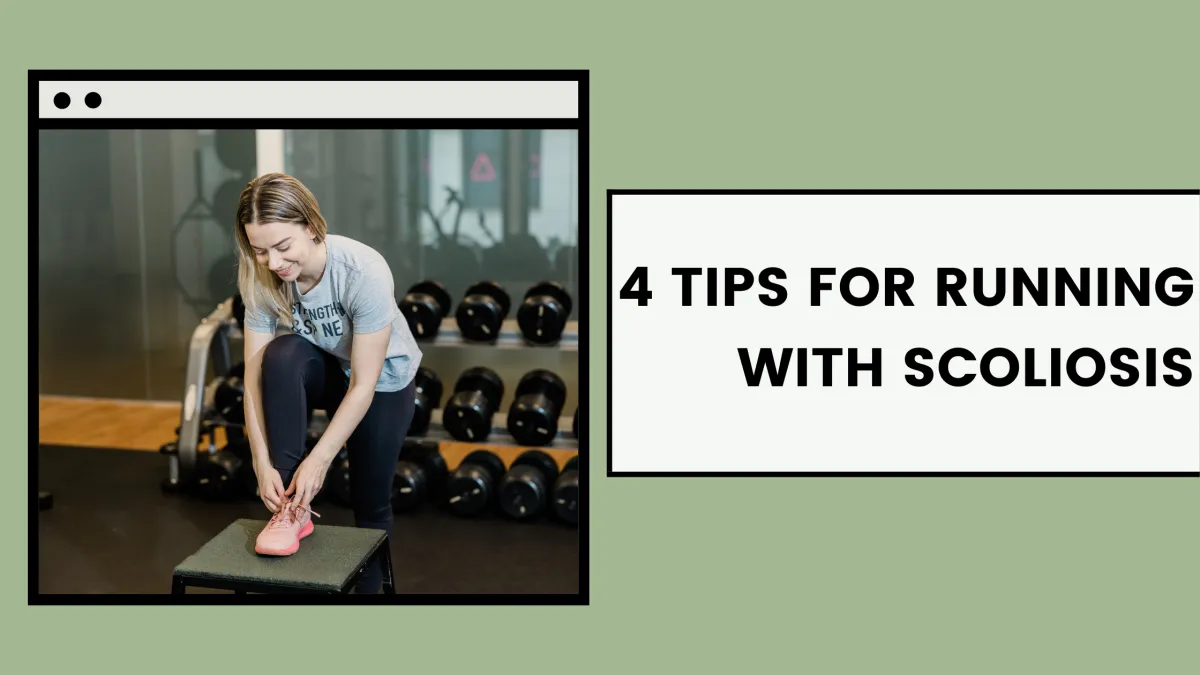Check Out The Latest Blog Posts To Learn More

4 Tips for Running With Scoliosis | Strength & Spine
4 Tips for Running With Scoliosis
Are you a runner? Or have you ever thought about starting a running program only to wonder whether it was safe for your spine? Yes, you can find some “advice” out there that says running with scoliosis is dangerous. But that blanket statement is completely outdated and incorrect for most people.
The truth is that running is a safe and beneficial form of exercise for most people with scoliosis. As long as you stretch properly and pay attention to your posture and form, you can enjoy running! If you’re ready to incorporate running into your routine, follow these tips to protect your curve and ensure you get the most benefits out of each run.
Tip #1: Complement running with other forms of exercise
Running offers many benefits — it’s a great cardiovascular exercise and can help build bone density to reduce your risk of osteoporosis. But it doesn’t do everything — no single form of exercise does! So it’s important to augment your running routine with strength training and scoliosis exercises.
Strength training is a good choice because it helps build muscle to support your spine. It can also help improve your posture and alignment and reduce chronic pain. If you’re a runner, it’s a good idea to strength train two to three times a week. Choose a program that focuses on balanced lower body and core work.
And don’t forget to incorporate scoliosis exercises as well. That means moves that help you correct your alignment and stabilize your curve. Doing these moves regularly helps improve your posture and build the core strength to maintain that proper alignment.
Tip #2: Prepare for each run properly
It’s essential to stretch before a run. Try some basic “runners’ stretches” to warm up your quads, ankles, and calf muscles. And don’t forget about your hamstrings. Spend a little extra time moving around to warm up and activate your hamstrings before you start your run.
Along with those basic running stretches, it’s important to spend a little bit of time doing elongation work before you run. Incorporating a few spinal elongation stretches can reduce the risk of injury or lower back pain after your run.
Tip #3: Make a plan for progress
If you want to get the most benefits out of your running routine, develop a progression plan. Running the same route in the same amount of time for months on end isn’t necessarily bad, but you may plateau and stop seeing the results you want.
A good rule of thumb is to try to progress your running intensity by about 10% each week. This could mean running for longer distances, setting a faster pace, or a mix of both. Choose what you want to focus on, make a plan, and work on making a little bit of progress each week.
Tip #4: Watch for signs of trouble
Whether you have scoliosis or not, there’s always a risk of injuring yourself when you run. Make sure you’re paying attention to how your body feels during your run and after. If you notice any pain or aching in the lower back, it might be a warning sign of a possible injury.
Depending on the exact nature of your curve, you may be bearing more of your weight on one side of your body. When that happens during a run, you might end up tripping over your feet, shifting your pelvis to one side, or experiencing back pain.
These issues may occur more when you’re tired because you don’t have as much energy to maintain your alignment. So try to time your runs for when you’re well rested, and if you notice a lot of tripping or soreness, consider taking a rest day or doing a gentler form of exercise until your energy is back.
Choose exercise activities that you enjoy
We all know that exercise is important, and it’s especially vital if you have scoliosis. Maintaining an active lifestyle can help you mitigate chronic pain and build critical strength to support your curve. The best way to ensure that you exercise regularly is to choose activities you enjoy — and that can absolutely include running.
Despite outdated advice saying otherwise, running is safe for most people with scoliosis. So if running is what you enjoy — get out there! Just remember to take some time to stretch and elongate your spine before you hit the road. And use your non-running days to get in some strength training and scoliosis-specific exercise.
What do those scoliosis-specific exercises look like? Spinal elongation and core strength are two of the main components. And if you want to learn how to incorporate both of those things into your workouts, take a look at our Core + Stretching Course Bundle. It includes two courses: Stretching with Scoliosis and Core Control with Scoliosis — all for just $159.
These online, self-paced courses cover scoliosis fundamentals, body mechanics, and working out without hurting your curve. Get your Core + Stretching Course Bundle now!
WE ARE
Strong with Scoliosis
Start today on an exercise program that helps you become empowered, strong, and confident in your scoliosis curve.
FIND US
Strength and Spine
Online Sessions and Coaching
We work with clients all over the world
*Please contact us for in-person appointments*

